Global warming is an increase in the average temperature at Earth’s surface. People often use the term global warming to refer specifically to the warming observed since the mid-1800’s. Scientists estimate that Earth’s average surface temperature rose by about 1.8 Fahrenheit degrees (1 Celsius degree) from the mid-1800’s to the late 2010’s. Researchers have also found that most of the temperature increase occurred since the mid-1900’s.

Natural processes have caused Earth’s climate to change in the distant past. But scientists have found strong evidence that human activities have caused most of the warming since the mid-1900’s.
Scientists predict that Earth’s average surface temperature will rise an additional 2.0 to 11.5 Fahrenheit degrees (1.1 to 6.4 Celsius degrees) by 2100. They also predict that if warming continues unchecked, it will damage human society and the environment. For example, global warming could melt enough of the ice on land near Earth’s poles to raise sea level. It could also lead to impacts such as more widespread droughts. These impacts—which go beyond a mere increase in temperature—are collectively known as climate change. Global warming and climate change could result in the extinction of many plant and animal species.
Researchers have developed a number of ways to limit global warming. But because the temperature increase is a global problem, many strategies require the cooperation of a diversity of nations, each with its own interests. Nevertheless, many countries are taking action individually and by international agreement to limit future warming.
Causes of global warming
Global surface temperatures have risen chiefly because of a process called the greenhouse effect. In the greenhouse effect, certain gases in the atmosphere trap heat from the sun. They act much like the glass roof and walls of a greenhouse. The heat-trapping gases are called greenhouse gases. They include methane (CH4), nitrous oxide (N2O), and ozone (O3). But the gas that has produced the most warming is carbon dioxide (CO2).
Natural concentrations of greenhouse gases in the atmosphere help keep the planet warm enough to support life. In addition, levels of greenhouse gases in the atmosphere have varied at different times. However, the levels were relatively stable for several thousand years before industry began to grow rapidly in the 1800’s.
Since the mid-1800’s, modern industry has caused significant increases in emissions (releases) of greenhouse gases. The increase in CO2 levels comes chiefly from the burning of fossil fuels. The fossil fuels are coal, oil, and natural gas. They contain carbon, and burning them releases carbon dioxide. The clearing of land also causes an increase in CO2 levels. Trees and other green plants remove CO2 from the air during photosynthesis—the process they use to produce their food. Thus, as land is cleared and forests are cut down, more CO2 remains in the atmosphere.
Not all human activities contribute to global warming. Some things that people do actually cool Earth’s surface. For example, many aerosols (suspensions of tiny particles) enter the atmosphere from automobile exhaust and factory smoke. The aerosols encourage the formation of clouds. Both aerosols and clouds reflect the sun’s heat back into space. As a result, they exert a cooling influence on Earth’s surface. But researchers estimate that overall, human activities have caused far more warming than cooling.
Scientists have also compared the influences of human activities on climate with the influences of natural processes. The only significant natural process involves changes in the sun’s energy output. The scientists found that human activities—mainly greenhouse gas emissions—produced more than 10 times the warming influence of changes in solar output.
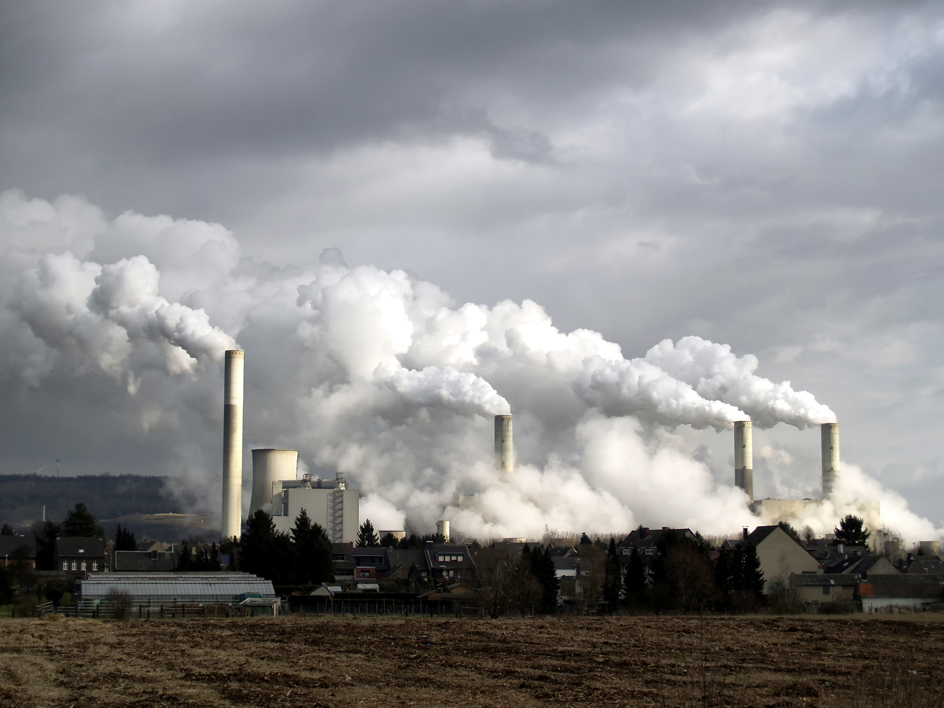
Impact of global warming
Researchers have linked global warming to a number of potentially damaging effects on living things and their ecosystems. An ecosystem consists of a community of organisms along with its physical environment. Global warming is also raising sea level. In addition, it is rapidly affecting the Arctic. Global warming may also alter weather patterns and affect human health around the world.
Effect on plant and animal life.
Rising temperatures have forced many animals to move to cooler areas. These animals may move to higher latitudes—that is, toward Earth’s poles—or they may move to higher elevations. For example, white storks are nesting higher in the mountains in Poland. In Australia, the large bats called flying foxes have migrated toward cooler conditions in the south. Scientists are concerned about organisms that have difficulty spreading to new places. Many land animals and plants cannot easily relocate.
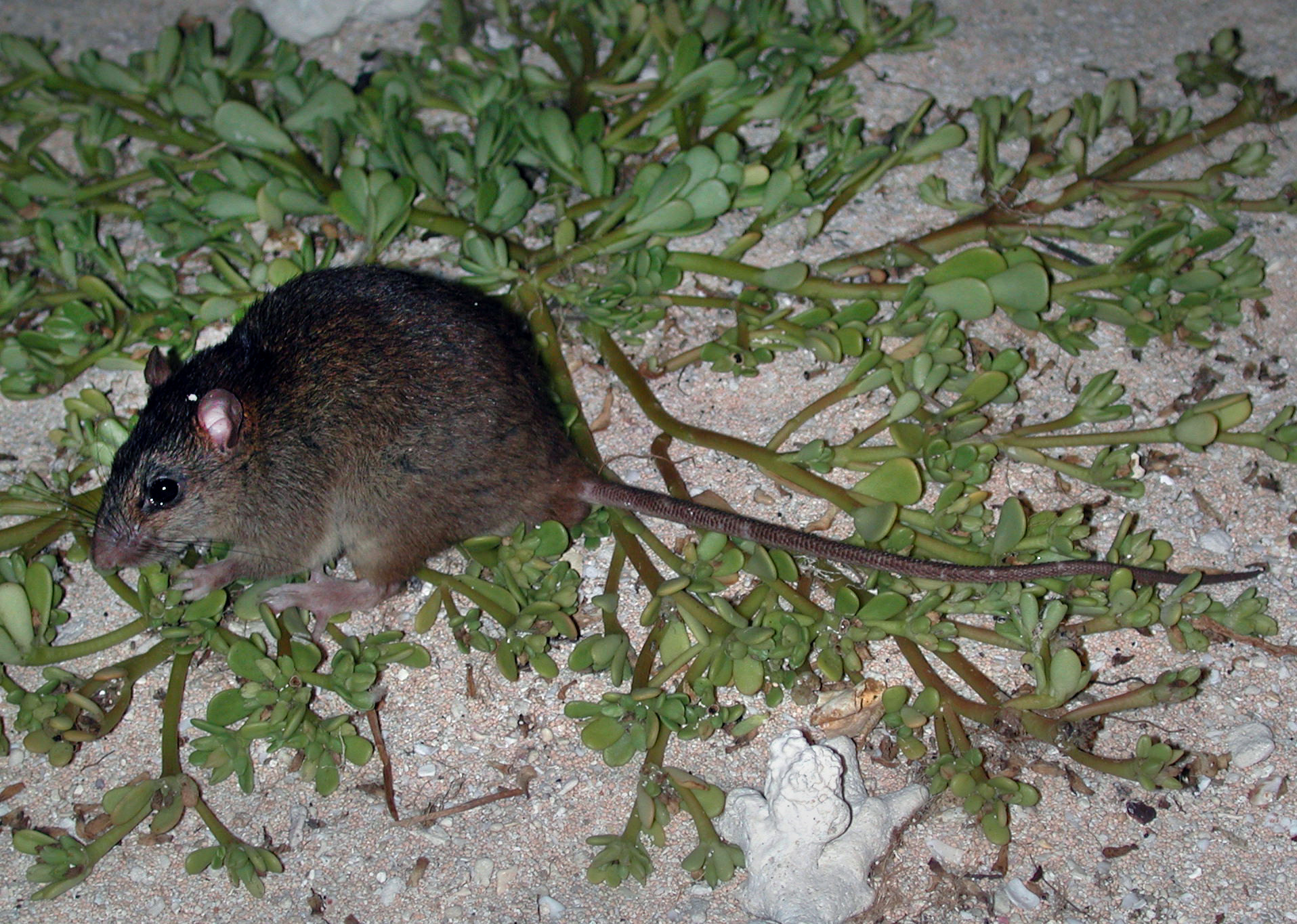
The faster global warming occurs, the more difficult it will become for many species to adapt. Scientists project that one in every six species is at risk of extinction if carbon emissions continue at the current pace and the average temperature rises 7.7 Fahrenheit degrees (4.3 Celsius degrees) or more.
Rise in sea level.
Earth’s average sea level rose about 7 inches (17 centimeters) over the 1900’s. Global warming contributed to the rise. Part of the increase occurred because water expands as it warms. Rising temperatures also melt ice on land, which then flows into the oceans. Rising sea level has already contributed to coastal flooding, erosion, and the loss of wetlands.
Researchers project that further warming will cause sea level to rise another 16 to 40 inches (40 to 100 centimeters) by 2100. However, instability could lead to the rapid collapse and breakup of the Antarctic ice sheets, raising sea level further still. Based on current projections, 360 million to 480 million people currently live on land that will be threatened by flooding at least once a year by 2100.
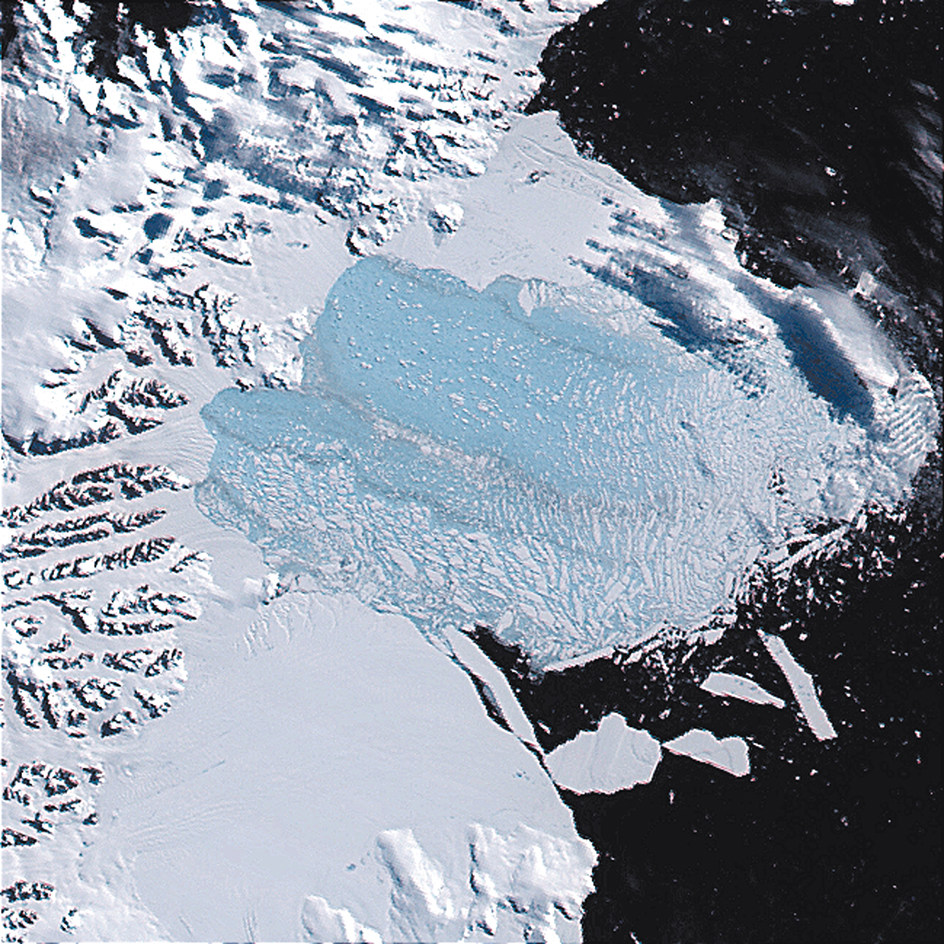
Rapid change in the Arctic.
Temperatures in the Arctic have increased about twice as fast as the global average. Due to the rapid warming, the area of the Arctic covered by sea ice in the summer has dropped since the late 1970’s. The melting of sea ice has little effect on sea level because the ice already floats on the ocean. But the loss of sea ice threatens many Arctic species. The threatened species include polar bears, which hunt on the ice, and seals, which give birth on it.
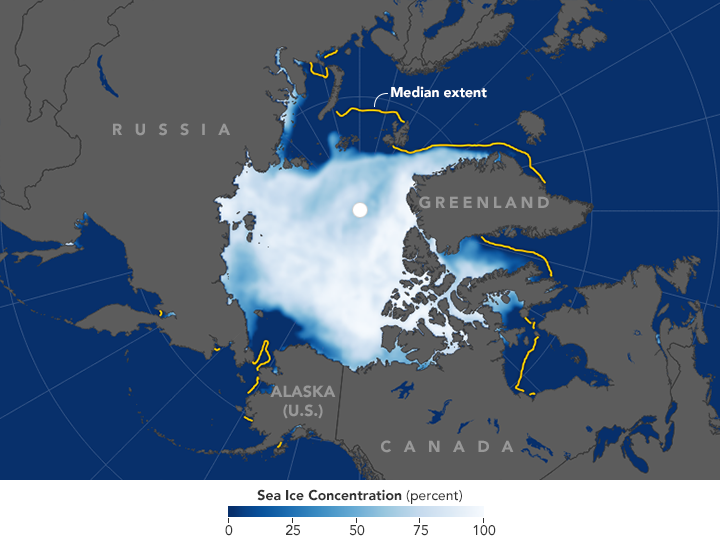
Harm to ocean life.
Warming seas have damaged marine ecosystems, particularly coral reefs. High ocean temperatures can cause coral bleaching. In this process, corals lose the colorful algae that live inside them and provide them with food. If temperatures remain too high, the corals turn white and die. Scientists project that only about 2 to 5 Fahrenheit degrees (1 to 3 Celsius degrees) of further warming of the ocean surface could cause the death of many coral reefs. This fact is of particular concern because the reefs provide a habitat for huge numbers of ocean species.
Threats to human health.
More frequent and intense hot days and heat waves can contribute to heat-related death and illness. Scientists also project more deaths and diseases caused by storms, floods, droughts, and fires. On the other hand, higher temperatures can reduce cold-related deaths. However, researchers predict that the harmful effects of rising temperatures on human health will outweigh the benefits.
Ways to limit global warming
To limit global warming, emissions of greenhouse gases must slow to a rate that allows atmospheric levels to stabilize. But emissions are instead rising rapidly. In addition, because the climate system changes slowly, there is a delay between an increase in greenhouse gas levels and the full temperature rise from that increase. As a result, some warming will continue even if greenhouse gas levels stabilize.
Scientists have studied several ways to minimize global warming. The most obvious method is to limit CO2 emissions. Another strategy is to remove CO2 already in the atmosphere. A third method, geoengineering, involves altering the environment to counteract warming.
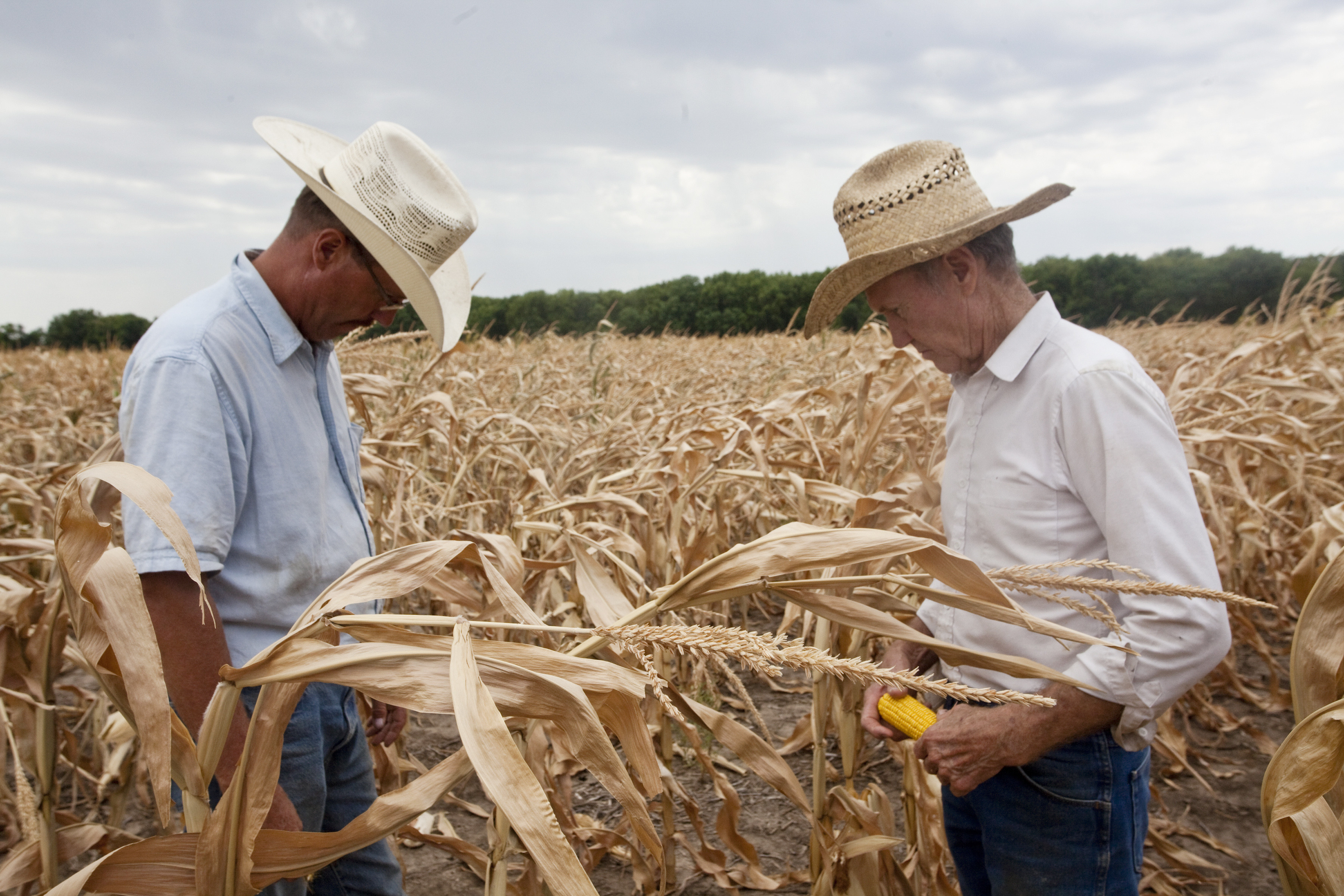
Limiting carbon dioxide emissions
chiefly involves burning less fossil fuel. Such a reduction can be accomplished by practicing energy conservation, using fossil fuels more efficiently, capturing emissions at their source, using alternative energy sources, and adopting battery technology.
Personal energy conservation
is any of a series of choices individuals make to save energy. Such choices reduce the consumption of fossil fuels. For example, people can turn off and unplug computers, televisions, and other electronic devices that are not in use. People can also reduce their consumption of goods and services that use a large amount of energy. They can take environmental impact into account when making purchasing decisions. Some people can cut emissions by walking or biking instead of driving. When driving is necessary, people can carpool or combine multiple errands in one trip.
Fuel efficiency
involves making the most of burned fossil fuels and other energy. Through careful engineering, gasoline engines can be designed to produce the same amount of power while burning less fuel. Household appliances can also be designed to use electricity instead of fossil fuels. Buildings can be designed or retrofitted (improved through the addition of newer technology) in a way that reduces the energy needed to heat and cool them.
Capturing emissions.
Special devices called scrubbers can capture CO2 from the exhaust of power plants and factories that burn fossil fuels. Some CO2 captured at these facilities could be incorporated into products, but most would have to be sequestered (permanently stored) in special locations. Carbon capture and storage (CCS) technology is expensive. It would require government support to be adopted on a large scale.
Captured CO2 could be injected underground into natural petroleum reservoirs from which most of the oil or gas has been removed. But CO2 injected in this way could escape due to an earthquake or other disruption. Some scientists think that CO2 could also be stored in layers of basalt, a type of volcanic rock. The basalt could chemically convert the CO2 gas into solid salts that would be unlikely to escape.
CO2 readily dissolves in water, and the ocean naturally stores much of the gas. Scientists are examining the possibility of sequestering carbon by pumping CO2 directly into the deep sea. However, they must carefully study the effects on ocean life. For example, water and CO2 combine to form carbonic acid, which would increase the acidity of the water.
Alternative energy sources
that do not emit CO2 include wind, sunlight, nuclear energy, and Earth’s internal heat. Devices known as wind turbines can covert wind energy to electric energy. Solar cells can convert sunlight to electric energy (see Solar energy). Geothermal energy systems extract energy from steam or water heated deep underground.
Alternative sources of energy sometimes cost more than fossil fuels. However, increased research and use is reducing the cost of alternative sources. In some places, wind and solar energy can compete in cost with energy from fossil fuels.
Battery technology
is crucial in the fight against global warming. Rechargeable batteries can augment (assist) or replace gasoline engines in vehicles and outdoor equipment. The potential of such technology to reduce emissions depends on how the energy used to charge the batteries is generated. But battery-charged vehicles and equipment almost always result in fewer greenhouse gas emissions than comparable technology using a gasoline engine.
Large battery banks can also be attached to the electric power grid. They can store energy produced by solar panels on sunny days and wind turbines on windy days. At night or when the wind dies down, such battery banks release their stored energy back into the grid.

Removing carbon dioxide from the atmosphere.
Even if all emissions ceased immediately, the amount of CO2 that human activities have already released into the atmosphere would continue to warm the planet for decades. Removing much of this CO2 from the atmosphere will be necessary to avoid the worst impacts of global warming.
Direct air capture
is the removal of CO2 from the atmosphere using specialized facilities and equipment. The removed CO2 would be sequestered in the same way as that captured by using carbon capture and storage technology.
Sequestration in plants and soils.
Green plants absorb CO2 from the atmosphere as they grow. They use the carbon for photosynthesis. Creating or enhancing ecosystems with abundant plant life, such as forests, wetlands, and even some kinds of cropland, could therefore remove much CO2 from the atmosphere. Such ecosystems would become saturated with CO2 in decades, however, preventing further sequestration. Furthermore, future generations would have to preserve the ecosystems to prevent the carbon from reentering the atmosphere as CO2.
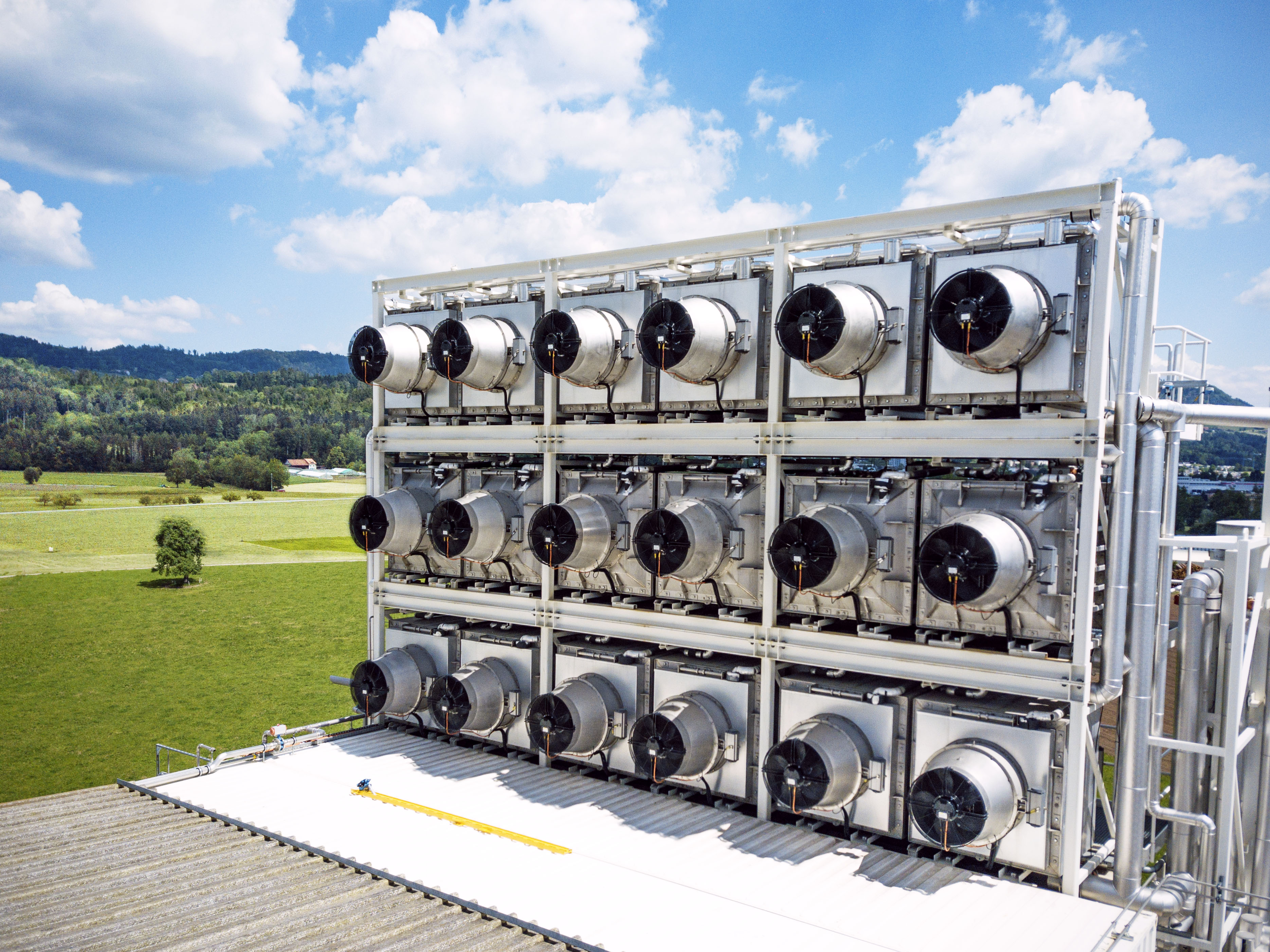
Enhanced weathering.
Certain kinds of rocks absorb CO2 from the atmosphere. This occurs naturally over many millions of years. Some scientists, however, have proposed grinding up rocks of these types and intentionally exposing them to air. This process, called enhanced weathering, could absorb much CO2 from the atmosphere.
Geoengineering
involves making large-scale changes to the environment to limit global warming. One approach would be to inject aerosols into the atmosphere to reflect sunlight and thus cool the planet. Another proposal is to put trillions of tiny screens in orbit around Earth to deflect some of the sun’s rays.
Such proposals carry unknown risks and challenges. For example, injecting aerosols into the atmosphere could increase acid rain—rain and other precipitation polluted by certain acids. Acid rain can kill fish in lakes and streams. Putting sun screens into space would be expensive, and the screens would need maintenance.
Government action on global warming
In an effort to limit global warming, many national and other governments have developed policies to reduce emissions of greenhouse gases. Because global warming is a problem that affects all the world’s nations regardless of borders, such efforts have involved a number of international agreements.
The Kyoto Protocol
required developed (wealthy) countries to restrict their emissions of CO2 and five other greenhouse gases. Under this agreement, different nations had different yearly emissions targets. As a whole, the developed countries had to reduce their emissions to a yearly average of about 95 percent of their 1990 emissions. The protocol did not place restrictions on developing (less wealthy) countries.
Delegates from around the world adopted the Kyoto Protocol as a preliminary document in 1997 in Kyoto, Japan. To enter into force, the protocol had to be ratified (formally approved) by at least 55 countries. The countries that approved also had to account for at least 55 percent of the CO2 emissions of all developed countries in 1990. Most nations eventually agreed to the protocol. It went into effect in 2005. However, the United States refused to ratify the treaty.
The Kyoto Protocol was a cap-and-trade system. It required each developed country to cap, or limit, its emissions to a certain target. Nations that reduced their emissions below their targets could trade, or sell, emissions credits to other countries. Such credits could be used to offset emissions. Cap-and-trade policies could also be used to control emissions within one country or within a single industry.
Under the Kyoto Protocol, developed countries could receive credit for investing in projects that reduced emissions in developing nations. Many companies invested in emissions reduction projects to generate credits. They sold these credits to individuals and businesses that used them to offset emissions from such activities as air travel and power usage.
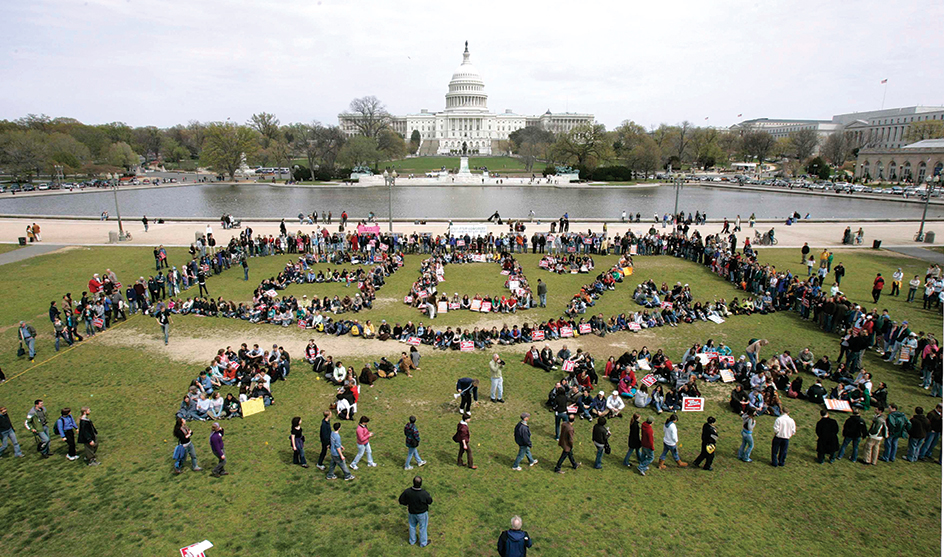
The Paris Agreement.
The Kyoto Protocol did little to stop global warming. It limited emissions to levels that were too high to stop the increase in greenhouse gas concentrations. But the protocol established a basis for future measures. Delegates at an international climate conference in Bali in 2007 began negotiating a new agreement. At a 2015 conference in Paris, delegates developed a replacement for the Kyoto Protocol. The new pact, called the Paris Agreement, entered into force at the end of 2016. 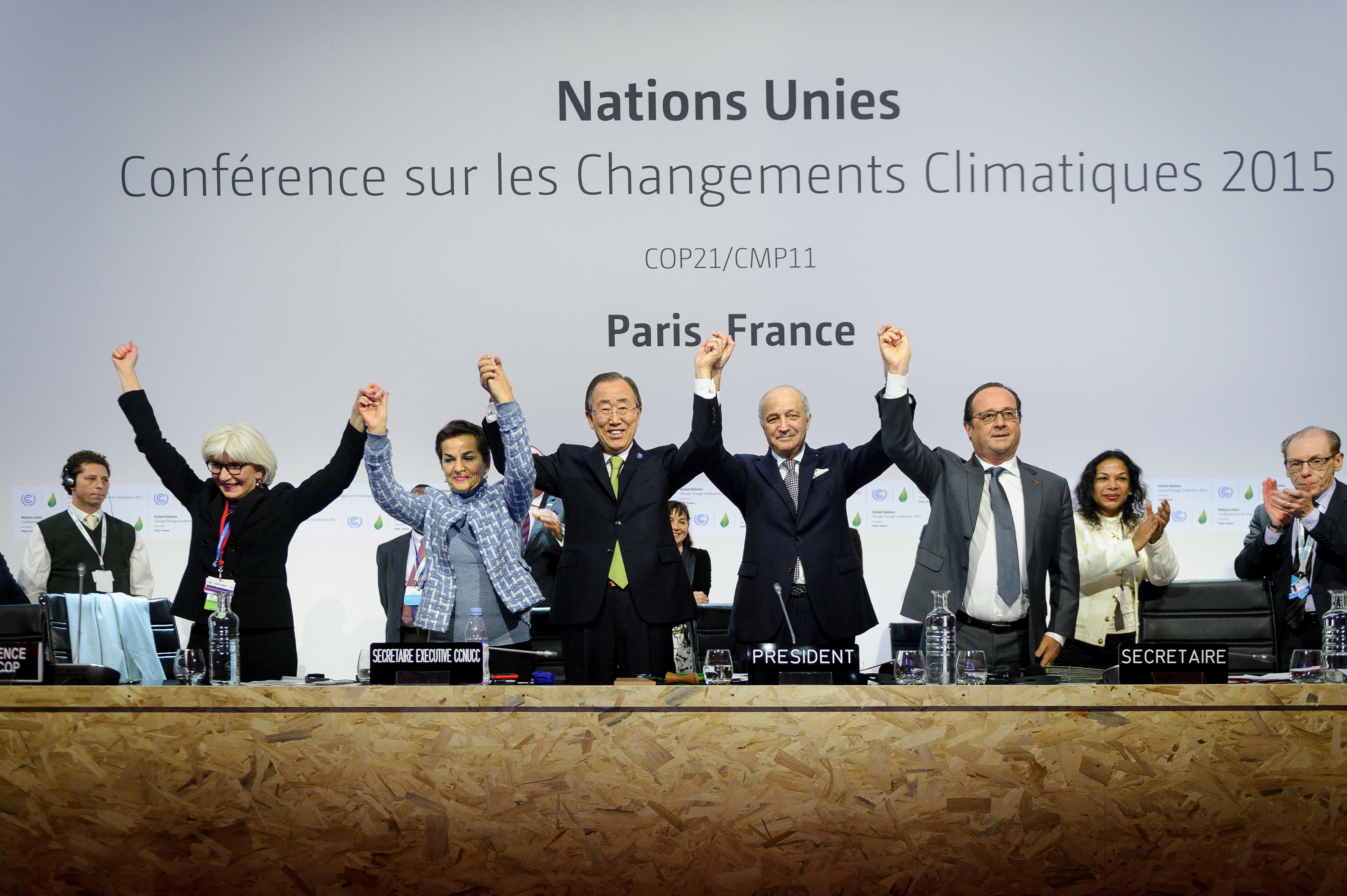
Under the Paris Agreement, countries have agreed to lower their emissions voluntarily as much as they are willing. The agreement lacks any enforcement mechanism. United Nations (UN) officials are counting on international pressure to hold nations accountable. Thus, it has been called a “name-and-shame” or “peer pressure” system. Such a system was the only kind upon which both developed and developing countries could agree.
By 2020, 187 countries had signed on to the Paris Agreement (all but 10 countries in the United Nations). The United States left the agreement in late 2020, under the direction of then-President Donald J. Trump. However, Trump’s successor, President Joe Biden, directed the United States to rejoin the agreement in 2021.
Other measures.
Some states, provinces, and countries have set their own emissions goals. In the United States, more than 30 states have passed Climate Action Plans and more than 20 states have set emissions targets. For example, California has passed laws intended to reduce its total greenhouse gas emissions to 40 percent below 1990 levels by 2030 and 80 percent below 1990 levels by 2050. British Columbia set a goal to cut emissions to 40 percent below 2007 levels by 2030, though it failed to reach a previous goal for emissions cuts by 2020. The United Kingdom has pledged to become carbon neutral (completely eliminate net CO2 emissions) by 2050.
One approach for governments to limit emissions is to impose a carbon tax, a tax on emissions of greenhouse gases. Such a tax can encourage companies to find ways to reduce emissions—ways that cost less than paying the tax. Several states, provinces, and countries have enacted a carbon tax.
How scientists study global warming
Climatologists (scientists who study climate) use information from many sources to analyze global warming. The most reliable climate information comes from standardized measurements provided by weather instruments. But records based on reliable instruments date back only to the middle to late 1800’s. Such records cannot show variations in climate that occurred long ago, before precise instruments were available.
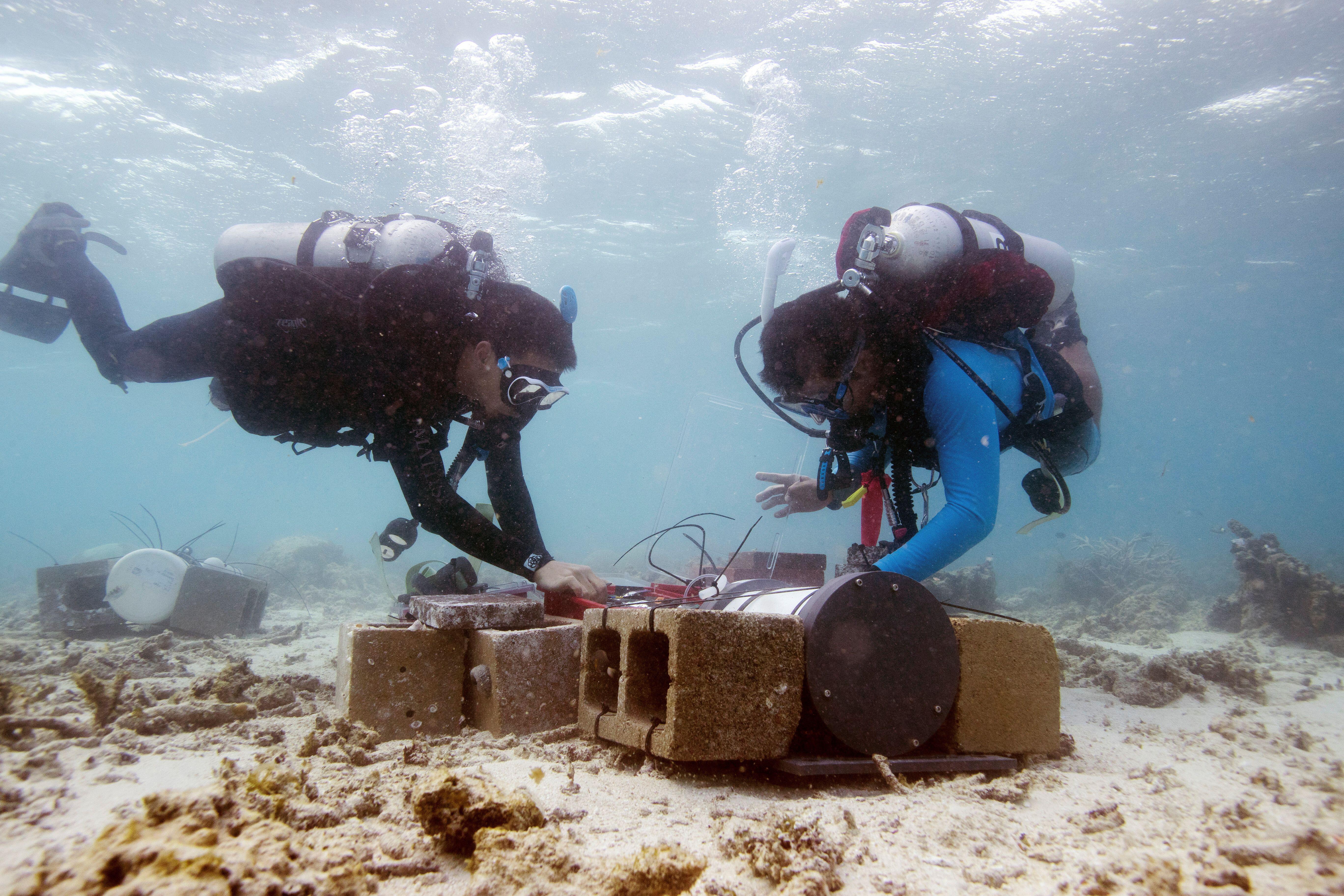

To look further back, climatologists analyze other types of evidence. Such evidence includes growth rings in trees, cores (cylindrical samples) of ice drilled from Antarctica and Greenland, and cores of sediment from ocean or lake beds. Tree growth rings, for example, can show when the weather was favorable for trees to grow rapidly. Ice cores hold tiny bubbles of air trapped when the ice formed. The bubbles can be analyzed to determine ancient greenhouse gas concentrations.
Evidence from these sources indicates that Earth is likely the warmest it has been in at least 1,300 years. It also shows that the temperature increase of the 1900’s was the largest in more than 1,000 to 2,000 years. Data from ice cores also show that the levels of CO2 and other greenhouse gases in the atmosphere are higher than they have been in at least the past 650,000 years.
Climatologists use computers to analyze past climate change and project future changes. First, scientists program a computer with a set of mathematical equations known as a climate model. The equations describe how various factors, such as the amount of CO2 in the atmosphere, affect temperature. Next, the scientists enter data representing how those factors change over time. The computer then runs the model, describing how the climate conditions would vary. Such a representation is known as a climate simulation. 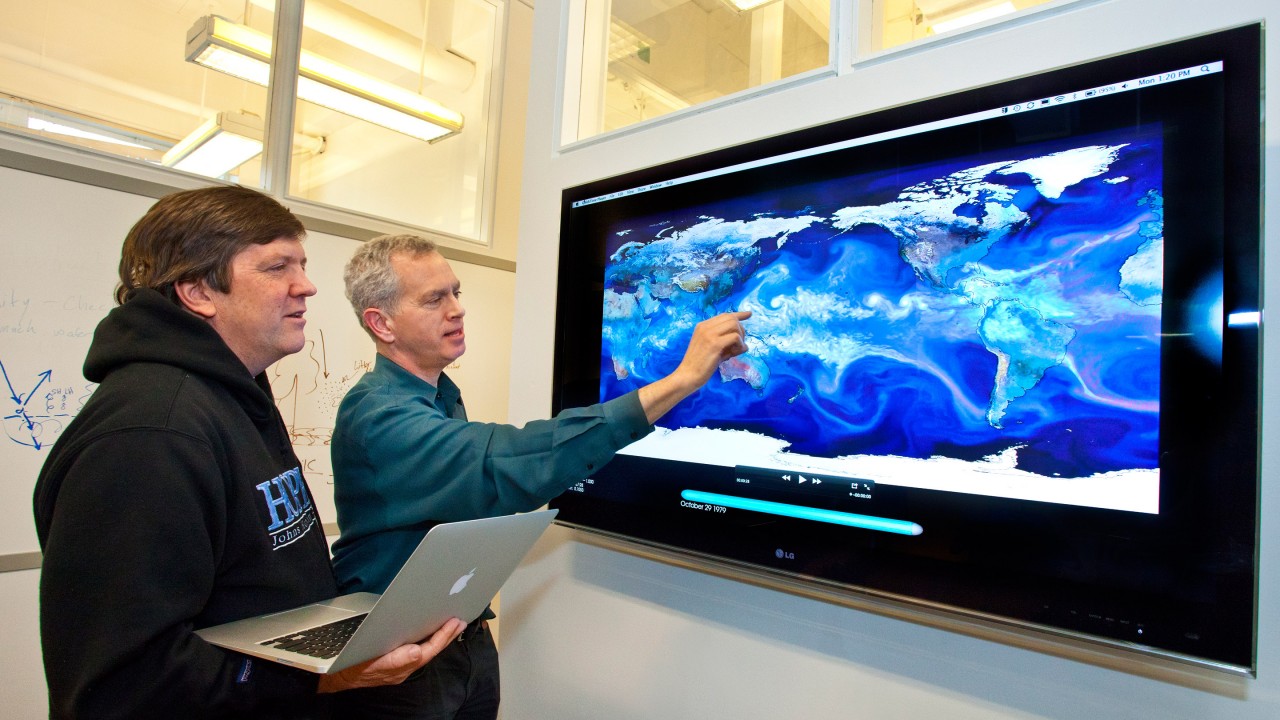
A complete understanding of global warming cannot be gained through simple observation. Its study relies on the scientific analysis of evidence and on climate simulations. This fact has enabled critics to dispute that warming has occurred. They also dispute that human activities caused the warming. To help establish a scientific consensus (general agreement), the United Nations established the Intergovernmental Panel on Climate Change (IPCC). The IPCC is a panel of scientists and governmental officials from more than 100 nations. It released several scientific reports during the 1990’s and 2000’s.
The IPCC conducted climate simulations as part of its studies. Its climatologists used different sets of simulations to model the warming of roughly the past 100 years. One set took into account both natural processes and human activities. Another set took into account only natural processes. The scientists then compared the temperatures produced by the simulations with temperatures recorded by thermometers. Only the set based on both natural processes and human activities corresponded closely to the actual temperature records. The results provided evidence that both natural processes and human activities have affected Earth’s climate and that human activities are the main driver of the recent warming.
The IPCC also carried out simulations to predict the effects of natural and human influences on temperatures until 2100. The simulations showed that there can be no quick and easy solution to global warming. Even if all emissions of greenhouse gases were to cease immediately, the temperature would continue to rise because of the greenhouse gases already in the atmosphere. However, the rate of emissions will determine the severity of global warming. The IPCC, along with former United States Vice President Al Gore, won the 2007 Nobel Peace Prize for increasing public awareness of global warming.
